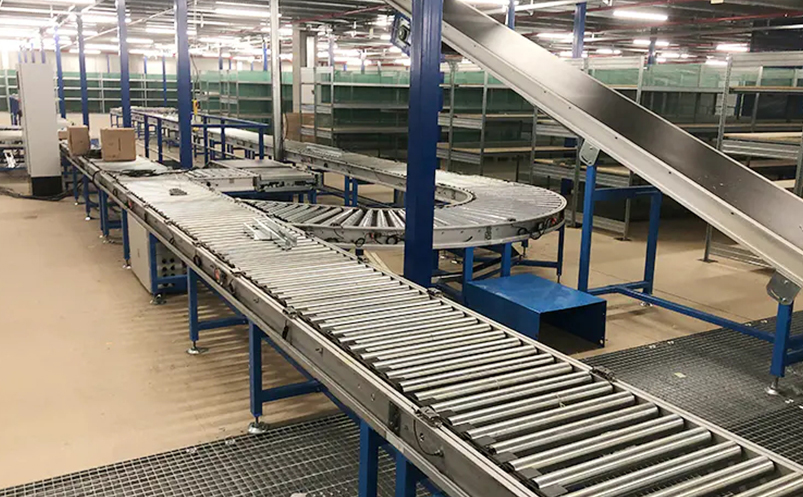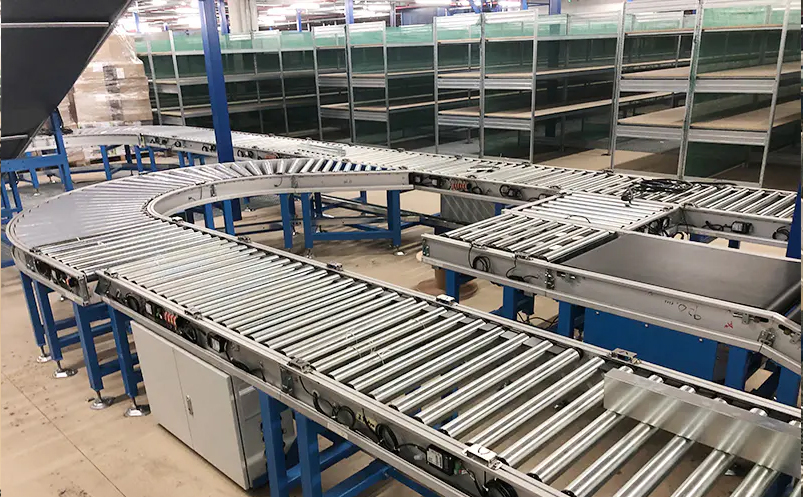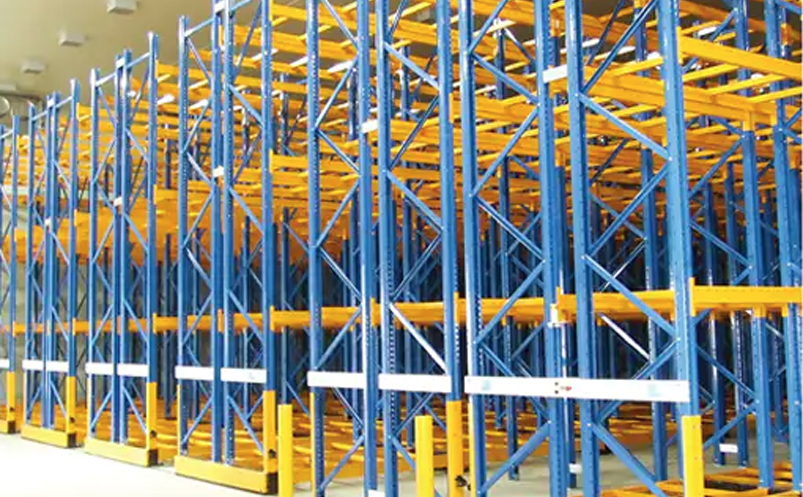In the world of material handling, efficiency and flexibility are key. Turning belt conveyors have emerged as a revolutionary solution, enabling the seamless transfer of materials around corners and through complex layouts. These conveyors are designed to navigate curves, allowing for a more efficient use of space in industrial facilities, warehouses, and distribution centers.
Working Principles
Belt Guidance Systems
At the heart of a turning belt conveyor is its belt guidance system. Specialized rollers and guides are strategically placed to ensure the belt follows a precise curved path. These components work in harmony to prevent the belt from slipping or deviation,maintaining a smooth and consistent flow of materials. For example, some turning belt conveyors use tapered rollers that gently guide the belt as it makes the turn, distributing the forces evenly across the belt surface.
Tension Management
Proper tension is crucial for the optimal performance of a turning belt conveyor. Tensioning devices, such as adjustable pulleys or counterweight systems, are employed to keep the belt taut. This not only prevents sagging but also ensures that the belt maintains sufficient grip on the rollers, enabling efficient power transmission. In a food processing plant, for instance, a well - tensioned turning belt conveyor can smoothly transport delicate products around corners without any disruptions.
Types of Turning Belt Conveyors
Horizontal Turning Conveyors
Horizontal turning belt conveyors are designed to make 90 - degree, 180 - degree, or custom - angle turns in a horizontal plane. They are commonly used in applications where space is limited and a change in the direction of material flow is required. In an e - commerce warehouse, horizontal turning conveyors can redirect packages from one sorting line to another, optimizing the flow of goods through the facility.
Vertical Turning Conveyors
Vertical turning belt conveyors, on the other hand, are used to change the vertical elevation of materials while making a turn. These conveyors are often employed in multi - level manufacturing plants or in situations where materials need to be lifted or lowered while changing direction. A vertical turning conveyor might be used in a multi - story building to transport construction materials up or down while navigating around structural obstacles.
Components and Design
Belt Materials
The choice of belt material is critical in determining the performance and durability of a turning belt conveyor. Common materials include PVC (Polyvinyl Chloride), PU (Polyurethane), and rubber. PVC belts are lightweight and offer good resistance to abrasion and chemicals, making them suitable for applications in the food and packaging industries. PU belts, on the other hand, are known for their high strength and flexibility, making them ideal for handling heavy loads. Rubber belts are often used in industrial settings where high traction and resistance to extreme temperatures are required.
Roller Configuration
The arrangement and design of rollers play a significant role in the smooth operation of a turning belt conveyor. In the turning sections, rollers are typically angled or curved to match the radius of the turn. This helps to guide the belt and prevent it from twisting or derailing. Additionally, the rollers are made of materials such as steel or plastic, depending on the application requirements. For example, in a pharmaceutical factory, where hygiene is of utmost importance, plastic rollers might be used to avoid any contamination risks.
Applications
Logistics and Warehousing
In logistics and warehousing, turning belt conveyors are essential for optimizing the flow of goods. They can be used to sort packages, direct items to different storage areas, or transfer products between different stages of the distribution process. A large - scale distribution center might use a network of turning belt conveyors to quickly and efficiently route thousands of parcels to their respective destinations, reducing handling times and improving overall productivity.
Manufacturing
In manufacturing plants, turning belt conveyors are used to transport raw materials, work - in - progress items, and finished products. They can be integrated into assembly lines, allowing for the seamless movement of components around the production floor. For example, in an automotive manufacturing plant, turning belt conveyors can transport car parts from one workstation to another, ensuring a smooth and continuous production process.
Food and Beverage Industry
The food and beverage industry has strict hygiene and safety requirements, and turning belt conveyors are well - suited to meet these needs. They can be used to transport food products, bottles, cans, and packaging materials. The use of food - grade belt materials and easy - to - clean components ensures that the conveyors comply with industry regulations. In a beverage bottling plant, turning belt conveyors can move filled bottles from the filling station to the labeling and packaging areas without any risk of contamination.
Advantages
Space Optimization
One of the primary advantages of turning belt conveyors is their ability to optimize space. By allowing materials to be transported around corners, they eliminate the need for large, straight - line conveyor systems. This is particularly beneficial in facilities where floor space is at a premium. A small - to - medium - sized warehouse can use turning belt conveyors to create a more compact and efficient layout, maximizing storage capacity.
Improved Efficiency
Turning belt conveyors contribute to improved efficiency by reducing the need for manual handling and minimizing the distance materials need to travel. They can be integrated into automated systems, allowing for a continuous and uninterrupted flow of materials. In a manufacturing process, this can lead to shorter production cycles and increased output. For example, in a electronics manufacturing plant, turning belt conveyors can quickly move circuit boards between different assembly and testing stations, reducing the overall production time.
Flexibility
These conveyors offer a high degree of flexibility in terms of layout and application. They can be customized to fit the specific needs of a facility, whether it's a simple 90 - degree turn or a complex series of curves. This makes them suitable for a wide range of industries and applications. A cosmetics factory, for instance, might use a customized turning belt conveyor system to transport products through a multi - stage packaging process, adapting to the unique layout of the production area.
Maintenance and Considerations
Regular Inspection
To ensure the long - term reliability of a turning belt conveyor, regular inspection is essential. This includes checking the condition of the belt for signs of wear, damage, or stretching. The rollers and guides should also be inspected for proper alignment and functionality. In a busy industrial environment, daily or weekly inspections can help to identify and address any potential issues before they cause major disruptions.
Belt Replacement
Over time, the belt on a turning belt conveyor will inevitably wear out and need to be replaced. When choosing a replacement belt, it's important to select one that is compatible with the conveyor's design and application requirements. The replacement process should be carried out carefully to ensure proper installation and alignment. In a packaging plant, for example, a well - planned belt replacement can minimize downtime and keep the production line running smoothly.
Safety Precautions
Safety is a top priority when operating any conveyor system, including turning belt conveyors. Guards should be installed to prevent workers from coming into contact with moving parts. Emergency stop buttons should be easily accessible, and proper training should be provided to all operators. In a manufacturing facility, these safety measures can help to prevent accidents and protect the well - being of employees.
Conclusion
Turning belt conveyors have revolutionized the material handling industry, offering a versatile, efficient, and space - saving solution for a wide range of applications. Their ability to navigate curves and adapt to complex layouts makes them an invaluable asset in logistics, manufacturing, and other industries. By understanding their working principles, components, applications, and maintenance requirements, businesses can make informed decisions when incorporating turning belt conveyors into their operations, ultimately improving productivity and competitiveness.







